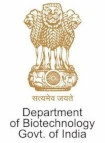The H. pylori CagA Oncoprotein Induces DNA Double Strand Breaks through Fanconi Anemia Pathway Downregulation and Replication Fork Collapse.
| Title | The H. pylori CagA Oncoprotein Induces DNA Double Strand Breaks through Fanconi Anemia Pathway Downregulation and Replication Fork Collapse. |
| Publication Type | Journal Article |
| Year of Publication | 2022 |
| Authors | Kolinjivadi AMouli, Sankar H, Choudhary R, Tay LSierra, Tan TZea, Murata-Kamiya N, Voon DChih-Cheng, Kappei D, Hatakeyama M, Krishnan V, Ito Y |
| Journal | Int J Mol Sci |
| Volume | 23 |
| Issue | 3 |
| Date Published | 2022 Jan 31 |
| ISSN | 1422-0067 |
| Keywords | Antigens, Bacterial, Bacterial Proteins, Cell Line, DNA Breaks, Double-Stranded, DNA Replication, Down-Regulation, Fanconi Anemia Complementation Group Proteins, Helicobacter Infections, Helicobacter pylori, Humans, Oncogene Proteins, Signal Transduction |
| Abstract | The proteins from the Fanconi Anemia (FA) pathway of DNA repair maintain DNA replication fork integrity by preventing the unscheduled degradation of nascent DNA at regions of stalled replication forks. Here, we ask if the bacterial pathogen exploits the fork stabilisation machinery to generate double stand breaks (DSBs) and genomic instability. Specifically, we study if the virulence factor CagA generates host genomic DSBs through replication fork destabilisation and collapse. An inducible gastric cancer model was used to examine global CagA-dependent transcriptomic and proteomic alterations, using RNA sequencing and SILAC-based mass spectrometry, respectively. The transcriptional alterations were confirmed in gastric cancer cell lines infected with Functional analysis was performed using chromatin fractionation, pulsed-field gel electrophoresis (PFGE), and single molecule DNA replication/repair fiber assays. We found a core set of 31 DNA repair factors including the FA genes FANCI, FANCD2, BRCA1, and BRCA2 that were downregulated following CagA expression. infection of gastric cancer cell lines showed downregulation of the aforementioned FA genes in a CagA-dependent manner. Consistent with FA pathway downregulation, chromatin purification studies revealed impaired levels of Rad51 but higher recruitment of the nuclease MRE11 on the chromatin of CagA-expressing cells, suggesting impaired fork protection. In line with the above data, fibre assays revealed higher fork degradation, lower fork speed, daughter strands gap accumulation, and impaired re-start of replication forks in the presence of CagA, indicating compromised genome stability. By downregulating the expression of key DNA repair genes such as FANCI, FANCD2, BRCA1, and BRCA2, CagA compromises host replication fork stability and induces DNA DSBs through fork collapse. These data unveil an intriguing example of a bacterial virulence factor that induces genomic instability by interfering with the host replication fork stabilisation machinery. |
| DOI | 10.3390/ijms23031661 |
| Alternate Journal | Int J Mol Sci |
| PubMed ID | 35163588 |
| PubMed Central ID | PMC8836099 |
| Grant List | NMRC/CIRG/1452/2016 / / Singapore Ministry of Health's National Medical Research Council / |

